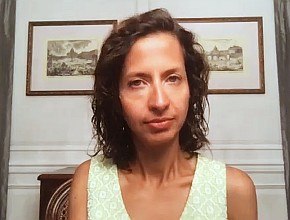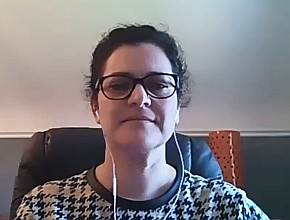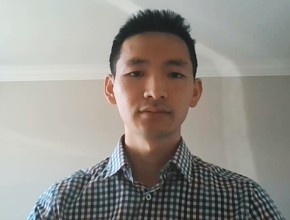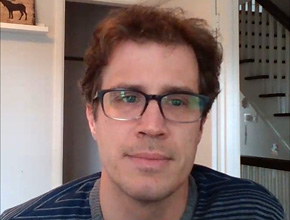Dr Dominik Mertz, associate professor in the Division of Infectious Diseases at McMaster University and medical director of infection prevention and control at Hamilton Health Sciences, joins Dr Roman Jaeschke in a discussion about COVID-19 vaccines, reopening schools, and air travel during the pandemic.
For part 1 of the interview, click here.
Roman Jaeschke, MD, MSc: Good afternoon, welcome to another edition of McMaster Perspective and another meeting with Professor Dominik Mertz. We were talking very recently about the epidemiology of coronavirus disease 2019 (COVID-19), case fatality rates, differences between countries, differences in mortality. I would like to talk today about a few hot topics, of which one is vaccination. Dominik, where do we stand? Could you give us a lay of the land in terms of vaccination?
Dominik Mertz, MD, MSc: Thanks, Roman. Vaccination is certainly one of the hottest topics these days, because that’s really our hope to get back to our old normal sooner rather than later. We have several vaccines—more than 10 as far as I know—currently in phase 3 trials, looking at vaccine efficacy in this case, so we get an idea of how protective those vaccines will be. All of those vaccines, or vaccine candidates, had very optimistic findings in phase 1 and 2 in terms of the level of immunity that they can actually trigger. But you really need the clinical effectiveness data at this point of time.
Roman Jaeschke: A few words on phase 1, phase 2, and phase 3 for the uninitiated, like myself.
Dominik Mertz: Phase 1 is dose finding and basic safety. Phase 2 is mostly looking at whether you get a response, and you look at neutralizing antibodies as your marker for response. And then in phase 3 you vaccinate tens of thousands of people, you send them out into the community to go about their lives and see whether those vaccinated are less likely to pick up COVID-19 in this case than others.
Roman Jaeschke: So we are in phase 3 by now, when people are actually getting vaccinated.
Dominik Mertz: Yeah. And it looks like the first studies are at least planning to have completed their phase 3 in fall of this year. The magic date seems to be end of October for Pfizer and probably also for Moderna. So they are very close to hopefully sharing positive data, but you have to wait and see. And there’s many more candidates still being in phase 2 and even more in phase 1 trials. So if those currently in phase 3 are not going to work out because of lack of efficacy or safety concerns, then we will have to wait for the others. But there are many more candidates in the pipeline that may eventually be the one—or one of the hopefully several vaccines—that we will have available sooner or later.
Roman Jaeschke: I think I’ve seen a database of vaccines that included 120 randomized controlled trials (RCTs) being around at the moment. That’s a rather amazing amount. So, we’ll see whether we get this vaccine and when. Some people are probably very interested in the results of that.
How should we behave in the meantime? I’m booked to go on an airplane in 4 weeks. How safe is that? Do you know?
Dominik Mertz: Nothing is perfectly safe. Whenever I get asked about “Is it safe to do X or Y?” the typical answer is, “Well, it’s not perfectly safe.” But the question becomes, “How safe is it compared to other things I may be doing?” or “What can I do to make it as safe as possible?”
If you need to travel by air, then to me the more important question is how you can do it as safely as possible and what to consider. But air travel certainly sticks out as something that’s probably much more safe than most people would think it is. There are certainly case reports of limited transmissions during airplane travel; so it does occur, it’s not perfectly safe, but when you consider how often you hear, “Oh, there was one or the other COVID-19 patient on airplane X or Y yesterday,” and then you look at all the case finding or the follow-up in fellow passengers there, in the vast majority of cases no transmissions have occurred. So it seems very safe. Probably much safer than many other things we do on a daily basis.
With this being said, in my mind, the risk is probably much bigger when you use public transport to get to the airport or back or you’re sitting in a restaurant at the airport or at the bar there than the travel itself on the airplane.
Roman Jaeschke: So, don’t drink and fly.
Dominik Mertz: Don’t drink before you fly. Yeah.
Roman Jaeschke: OK. The next and probably the hottest topic these days is schools. The answers may be simple or complex and I know that there are probably no what would be considered true answers for everybody, but what’s your view on that?
Dominik Mertz: I think if you look at what’s happening across the globe, Canada seems to be one of the last countries reopening schools, so I think that’s one piece in the puzzle in my mind. Many European countries would have opened shortly after the first wave or now—the summer break is already over and they would be back at school. And there’re certainly—and I don’t need to go into details—all the positive effects of schooling for kids; otherwise people wouldn’t have invented that thing I don’t know how long ago.
But on the other hand, it certainly adds risk. So, it’s out of the question that we will have COVID-positive students going to school, or teachers, or other staff working at school who will test positive and we will have exposures. I don’t think that can be avoided. There will be transmissions occurring. I would be very surprised if that was not the case. All of this needs to be taken into consideration or balanced against the positive aspects of having kids back at school.
Then the question becomes, again, similar to what we discussed with air travel. Rather than asking the question, “Is it safe to bring my kids back to school?” I think the question becomes, “What can we do to make school as safe as possible?” or “What do I need to consider individually? Is it worthwhile for me to take that additional risk within my bubble or within my family?” I think the second piece is relatively easy to address in terms of principles. If none of the siblings, none of the parents are at a high risk of complications from COVID-19, then probably the risks of sending the kid back to school is outweighed by the potential benefits for that particular kid. If you have a chronically sick parent or you have your grandparents under the same roof, then that balance may shift and you may make or may want, if you can, to make a decision to maybe not send your kid at home back to school. But these are very personal decisions.
The overarching drivers that should affect those decisions are, “What does the transmission in my community look like?” It doesn’t look like schools are the main drivers for community transmission, but when you have community transmission, you will have those cases at school sooner or later and you may have transmissions at school. So, the lower your transmission out in the community—and I’m really referring to uncontrolled transmission in the sense that you have classes of people you don’t know where they got COVID-19 from—the higher is your risk that something may occur at school. And to me, for every risk or every decision you make, that something should be kept in mind.
Roman Jaeschke: So no simple answer for everybody.
Probably the last question in this in this department, which combines those things. Somebody who was traveling asked me whether we should wear a shield, an eye shield or a face shield, versus safety glasses versus masks. What would be your answer to such a question?
Dominik Mertz: I think the easy answer is there is no easy answer here, because in most settings, based on laws, by-laws, or rules—for example, when you board an airplane, you typically have to wear a mask and they wouldn’t accept a face shield or goggles as a replacement for that. And you don’t have the choice whether you don’t mask or mask, you just have to mask. I think the masking is not really a decision that we can or have to make anymore in most instances, I would say.
Then the question becomes more of, “Should I wear anything in addition to that? Should I wear a mask plus a face shield or plus goggles?” It’s certainly true that in the health-care setting we really emphasize the eye protection in addition to a mask, because we are dealing with symptomatic patients who are coughing, etc. There’s a big risk for droplets not only getting into our airways, but also getting into our eyes. And I think nobody really questions that the eyes can be a point of entry for the virus. Face shields, or eye protection in general, are probably of much lower relevance in a community setting where if people more or less adhere to the rules and stay home when they are sick, you are only getting in contact with presymptomatic or asymptomatic carriers and they usually don’t cough. They may speak moistly, as we learned from our Prime Minister, which certainly comes with some risks, but the incremental benefit of wearing eye protection in the community is probably not as significant.
Roman Jaeschke: Thank you very much for all this information. Depending on when we get the vaccine and how protected we will be, I may use your expertise again to figure out how to behave and what the world looks like at any given time. In the meantime, thank you very much for your time.
Dominik Mertz: Thanks, Roman.
Roman Jaeschke: Goodbye.
 English
English
 Español
Español
 українська
українська







